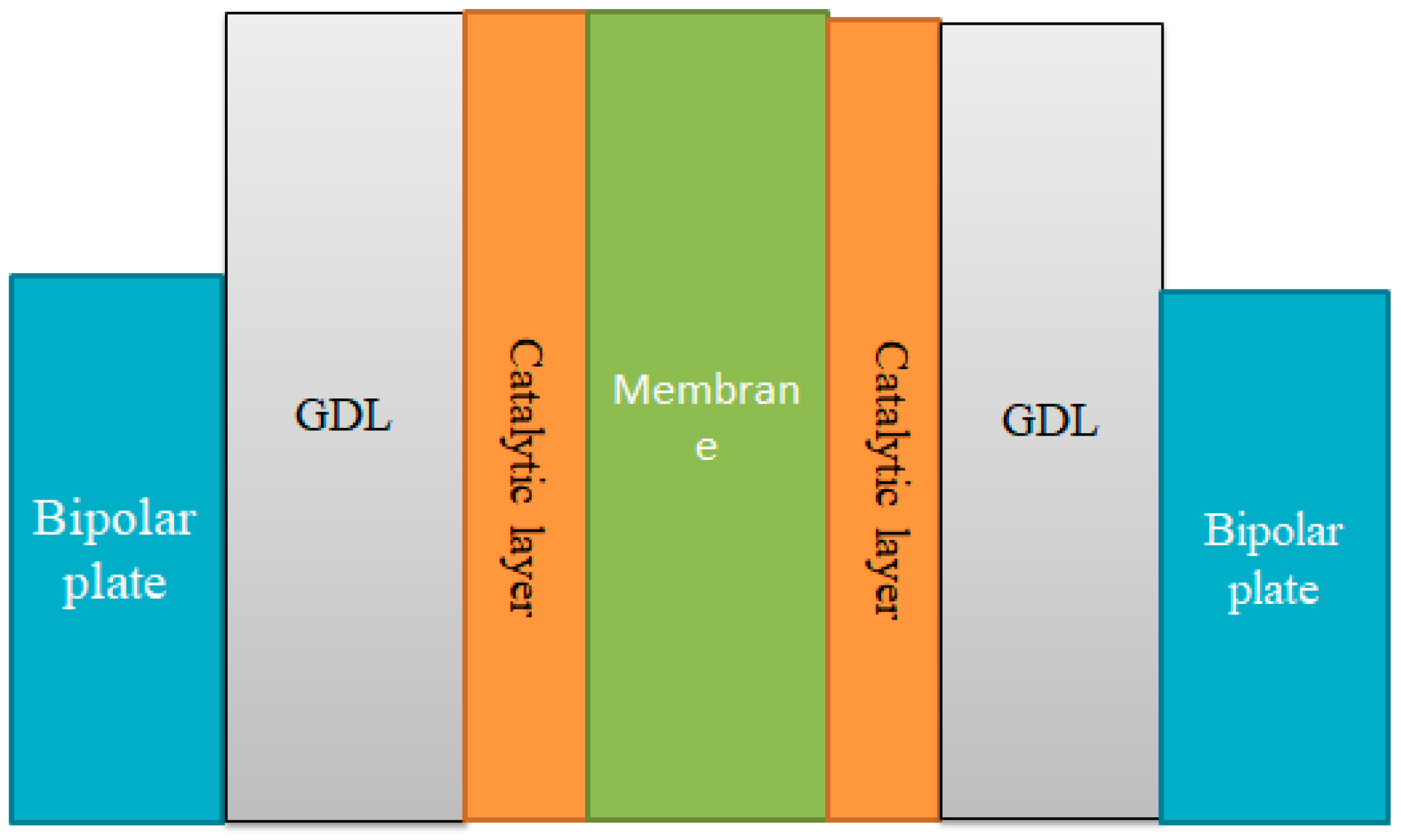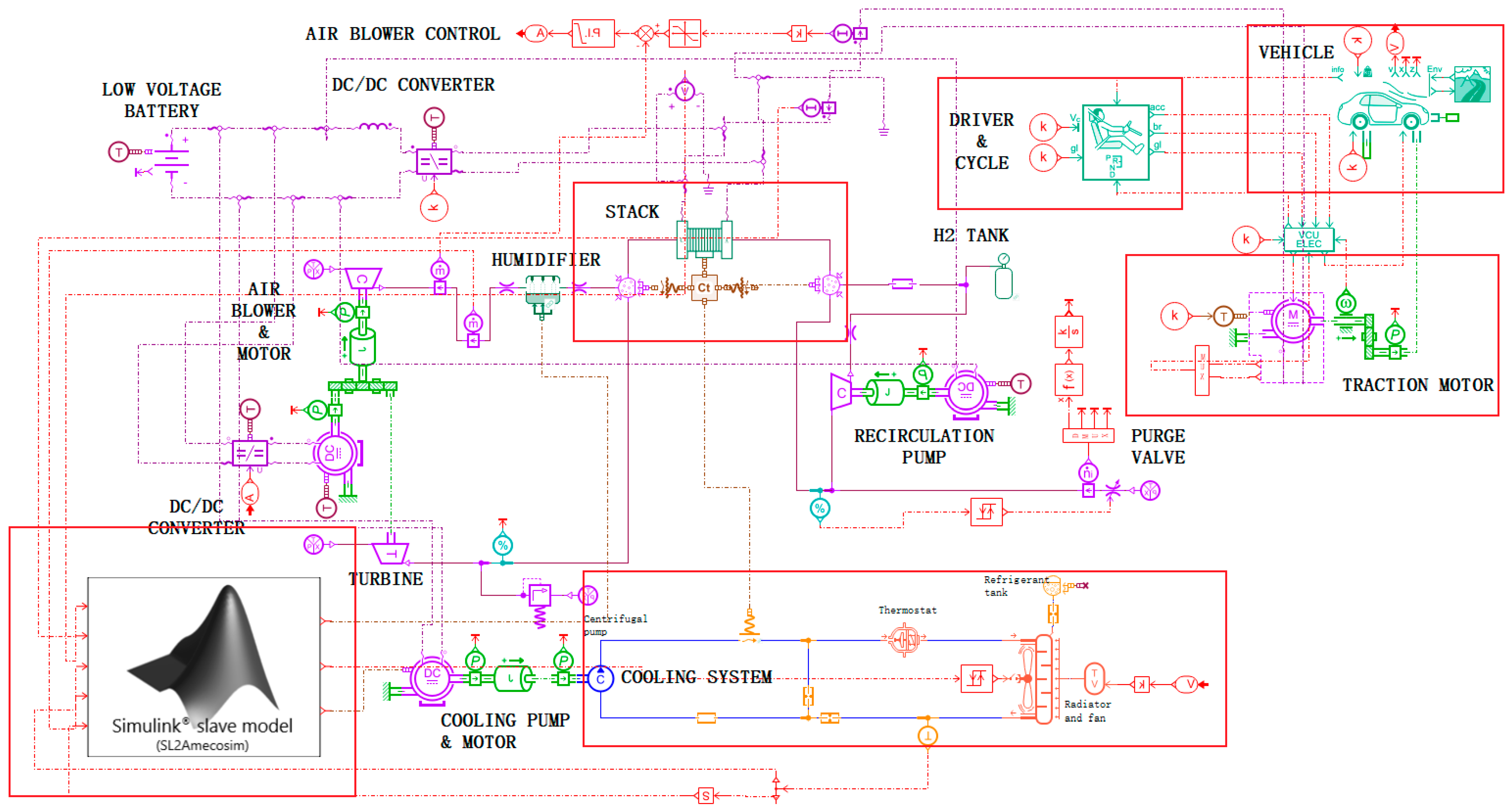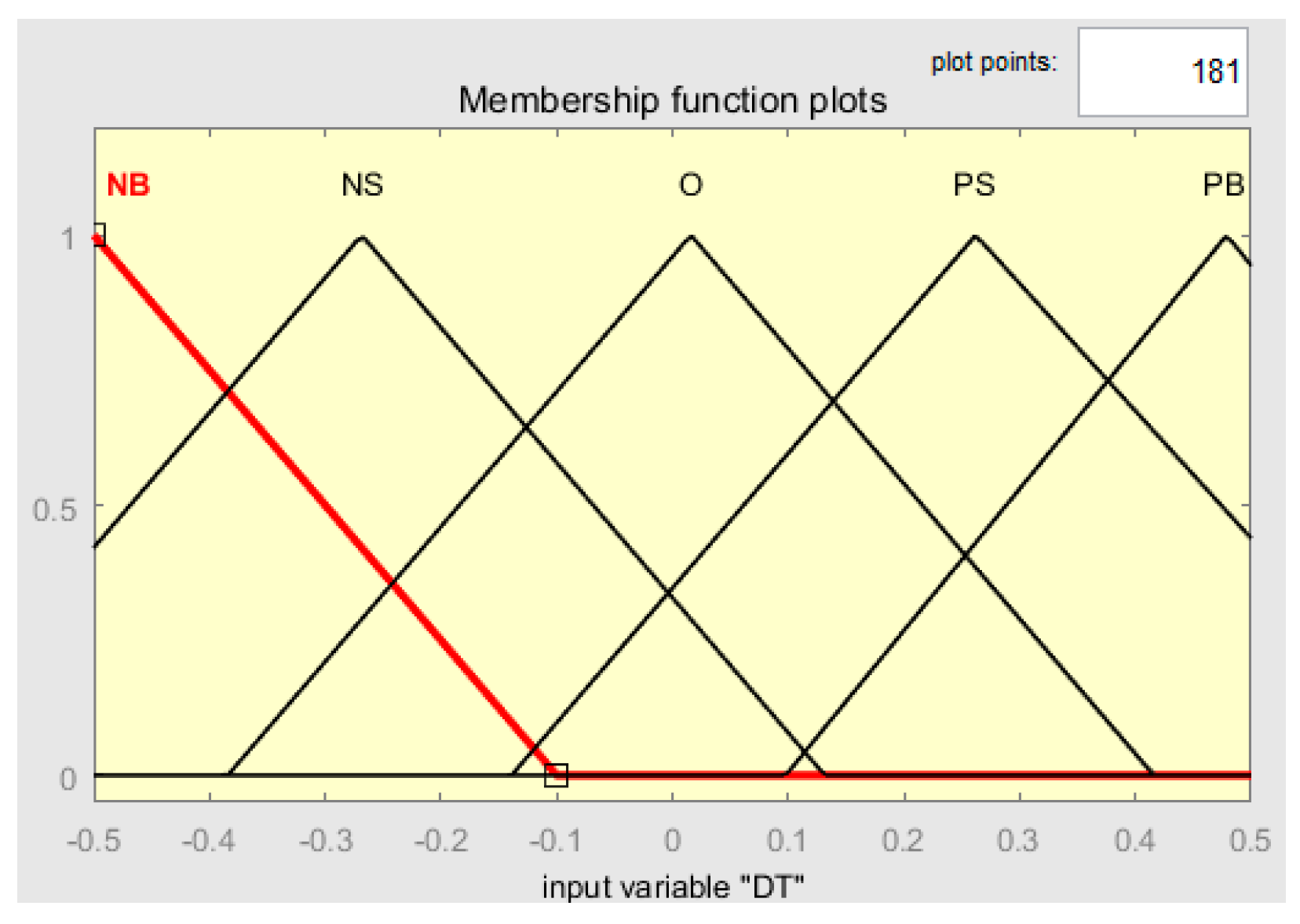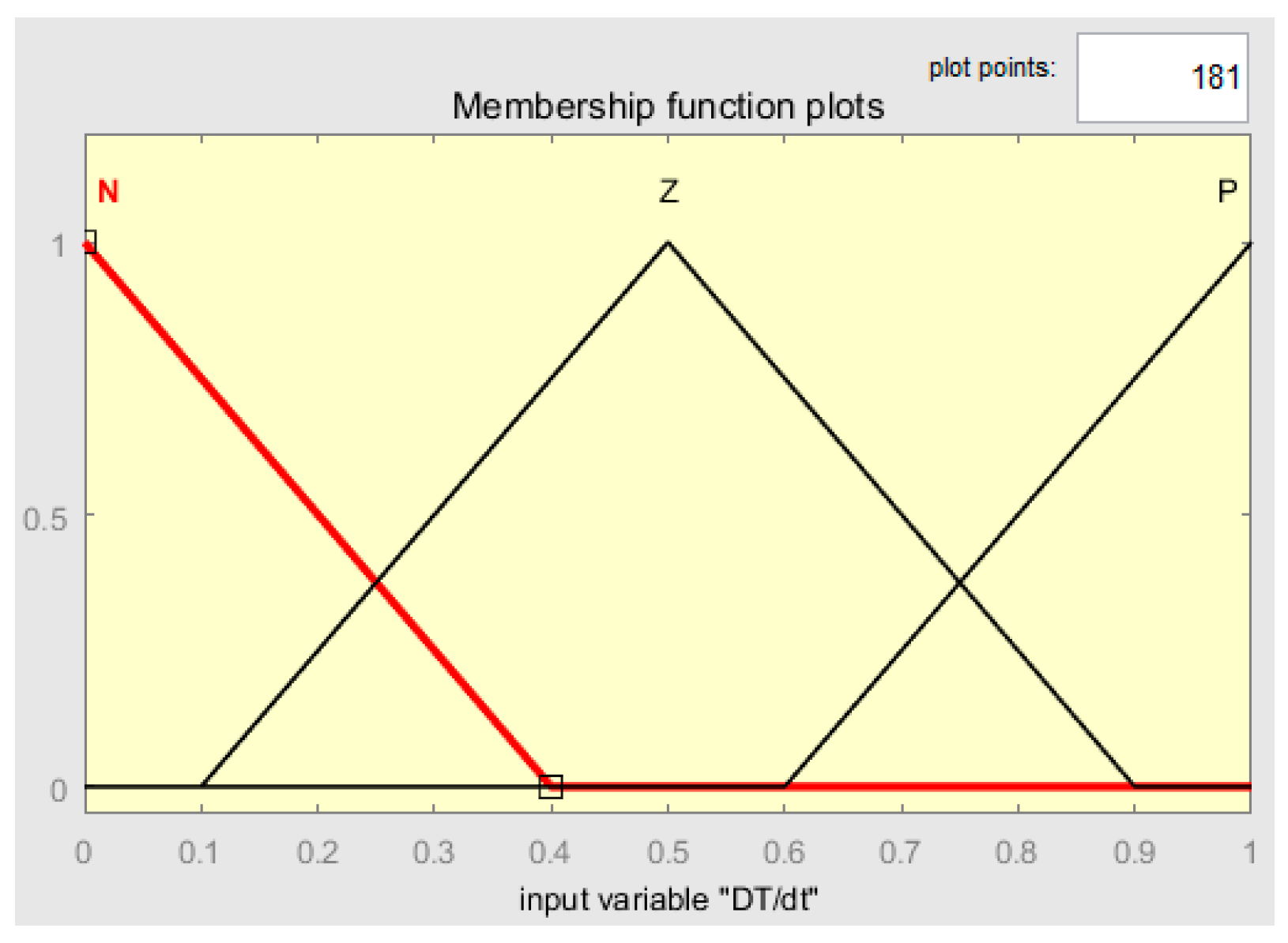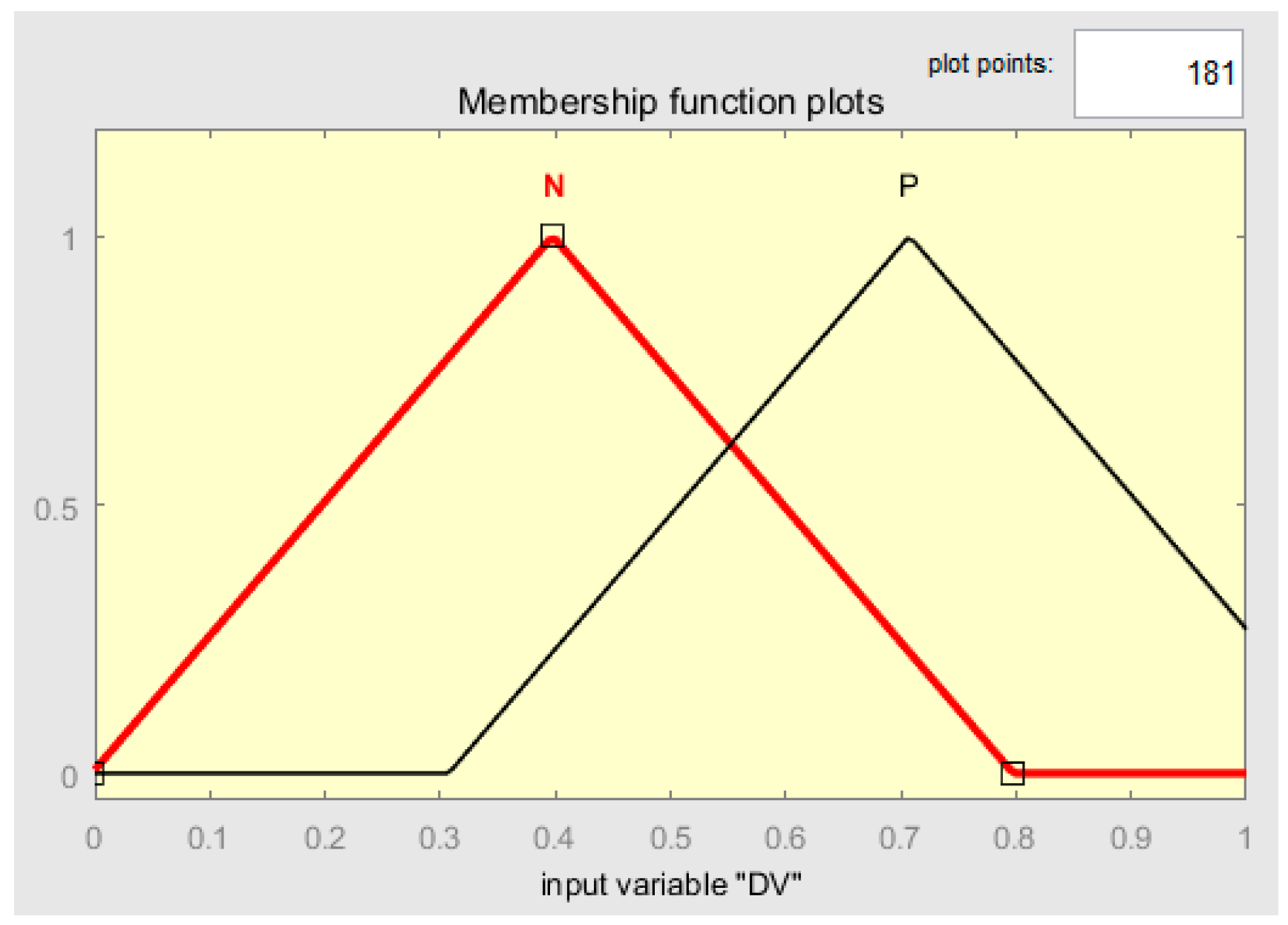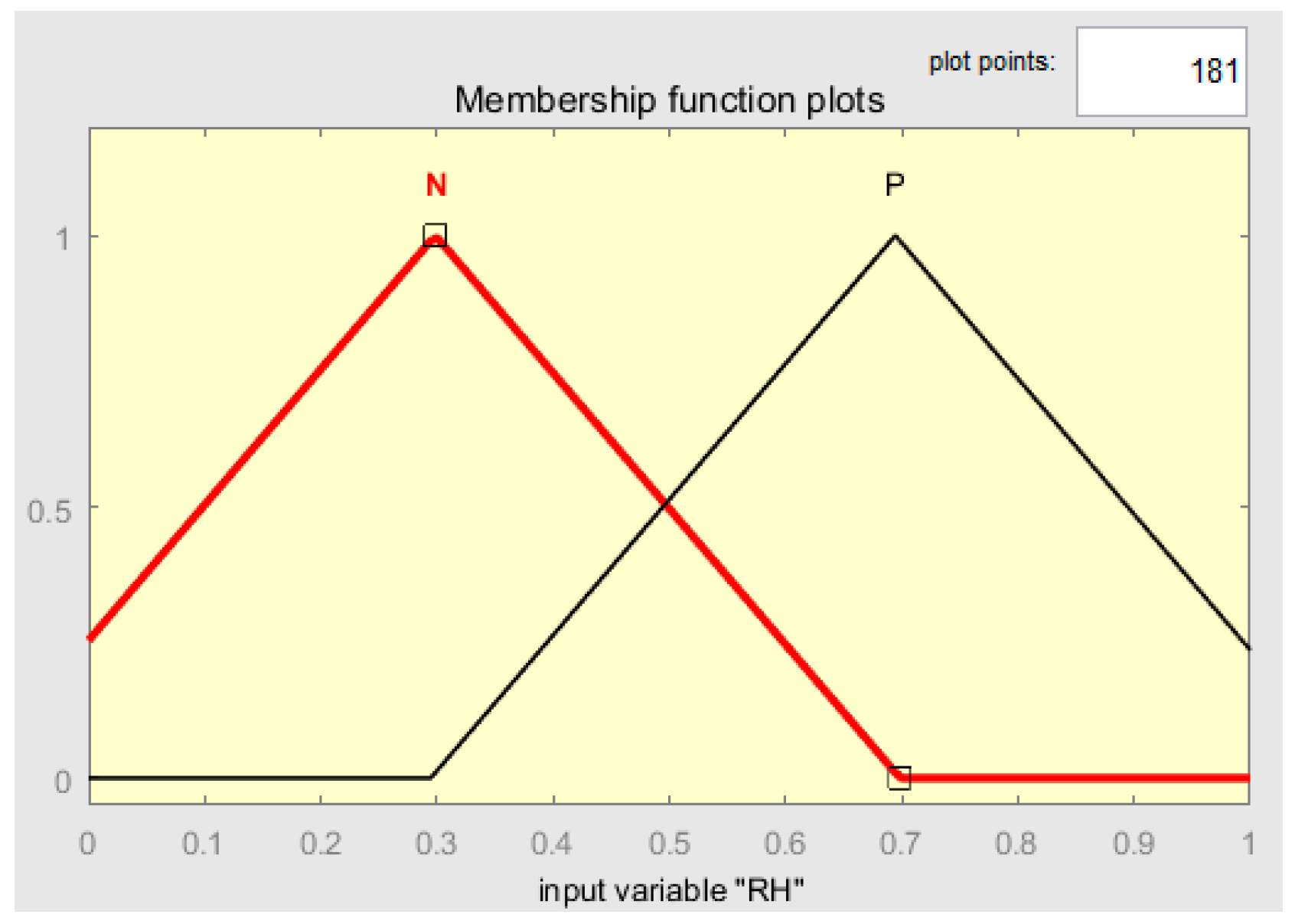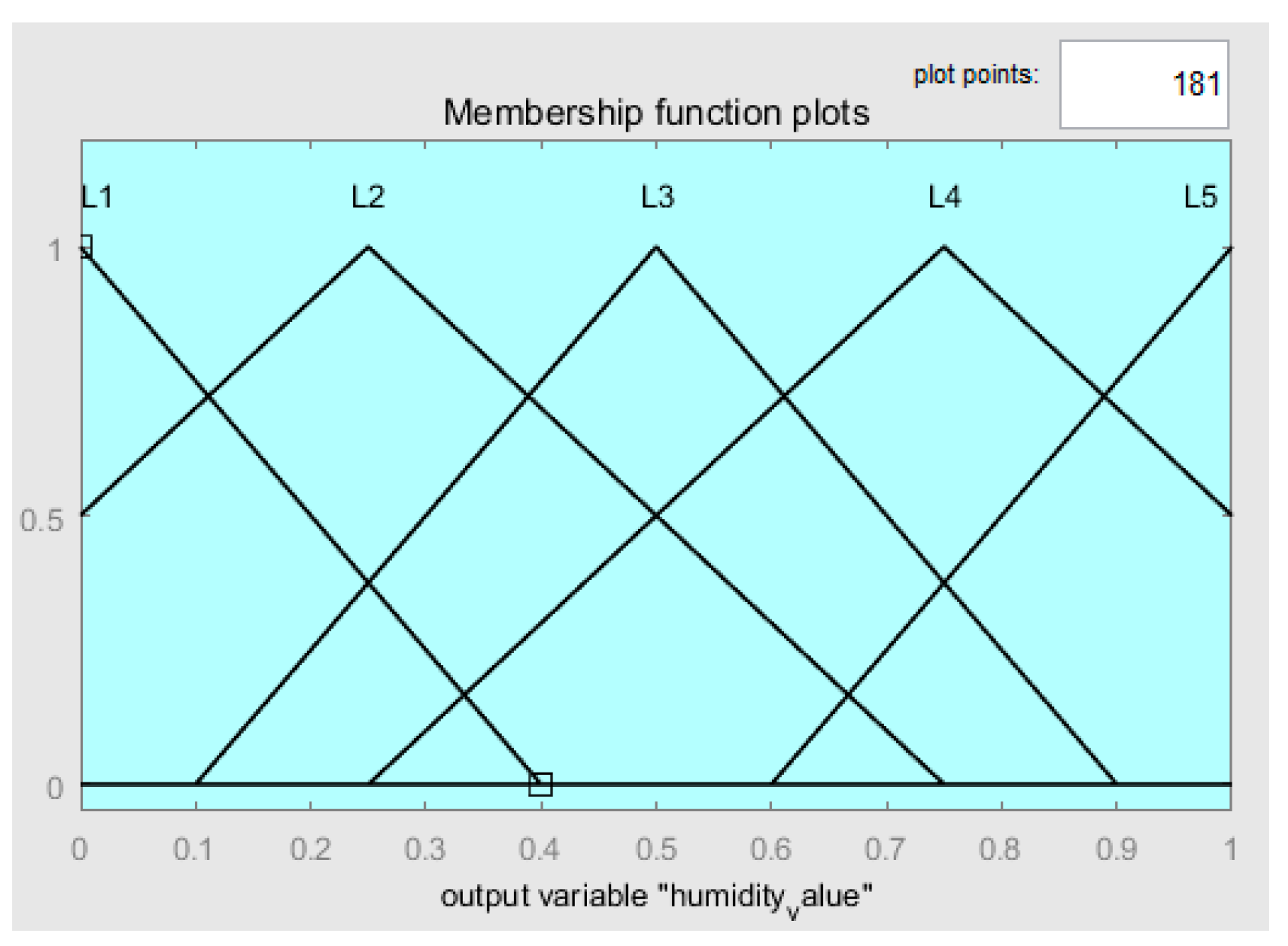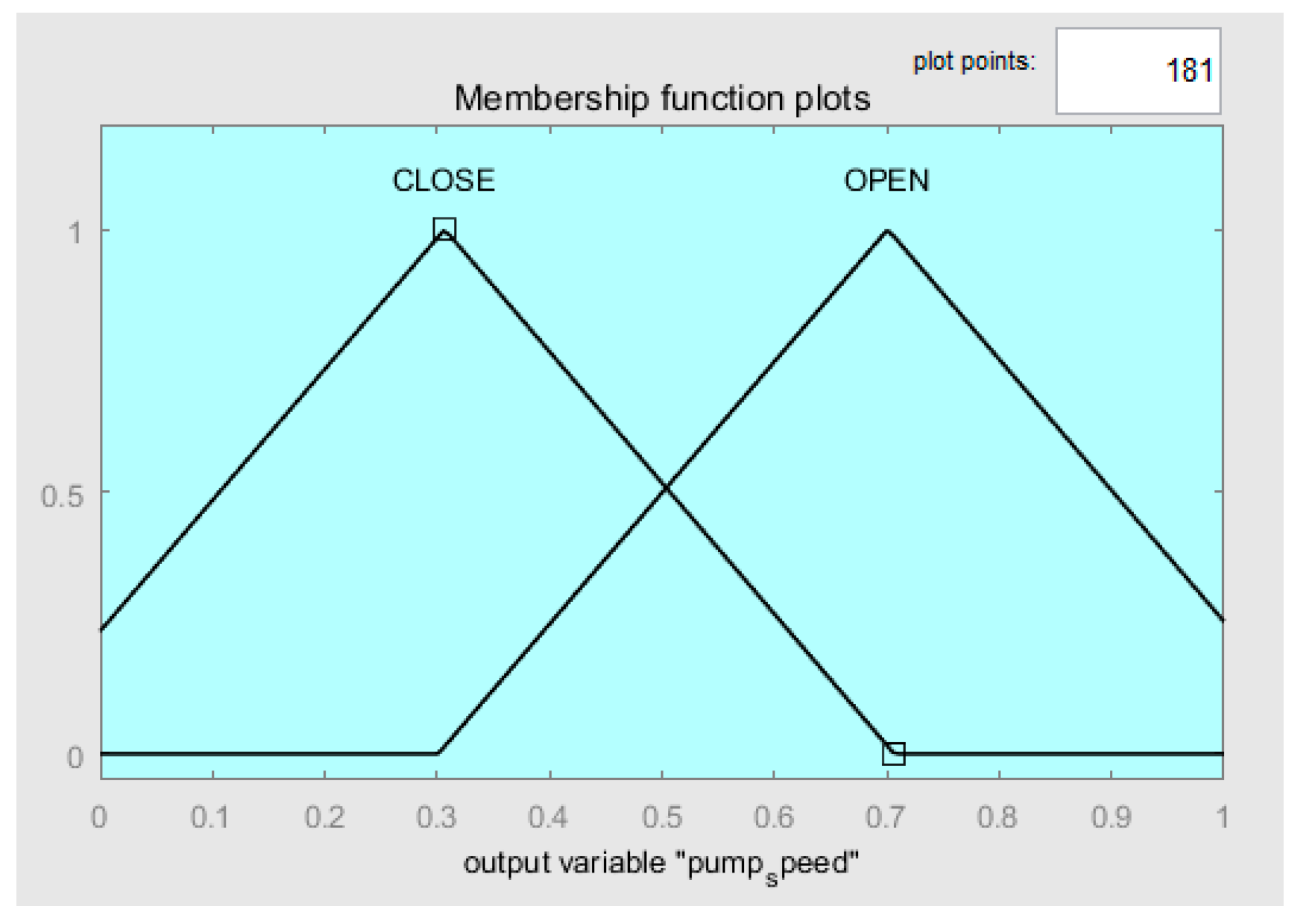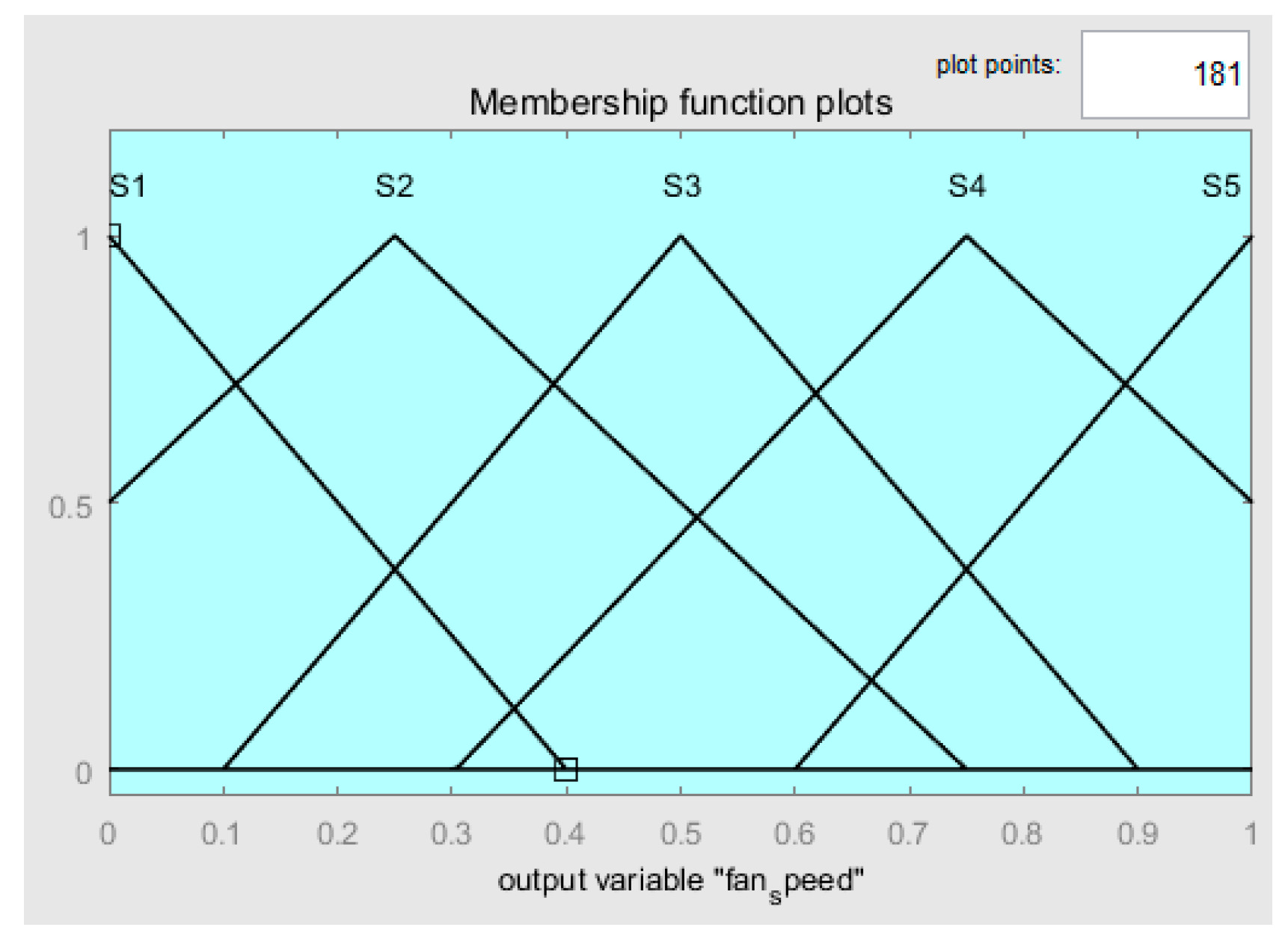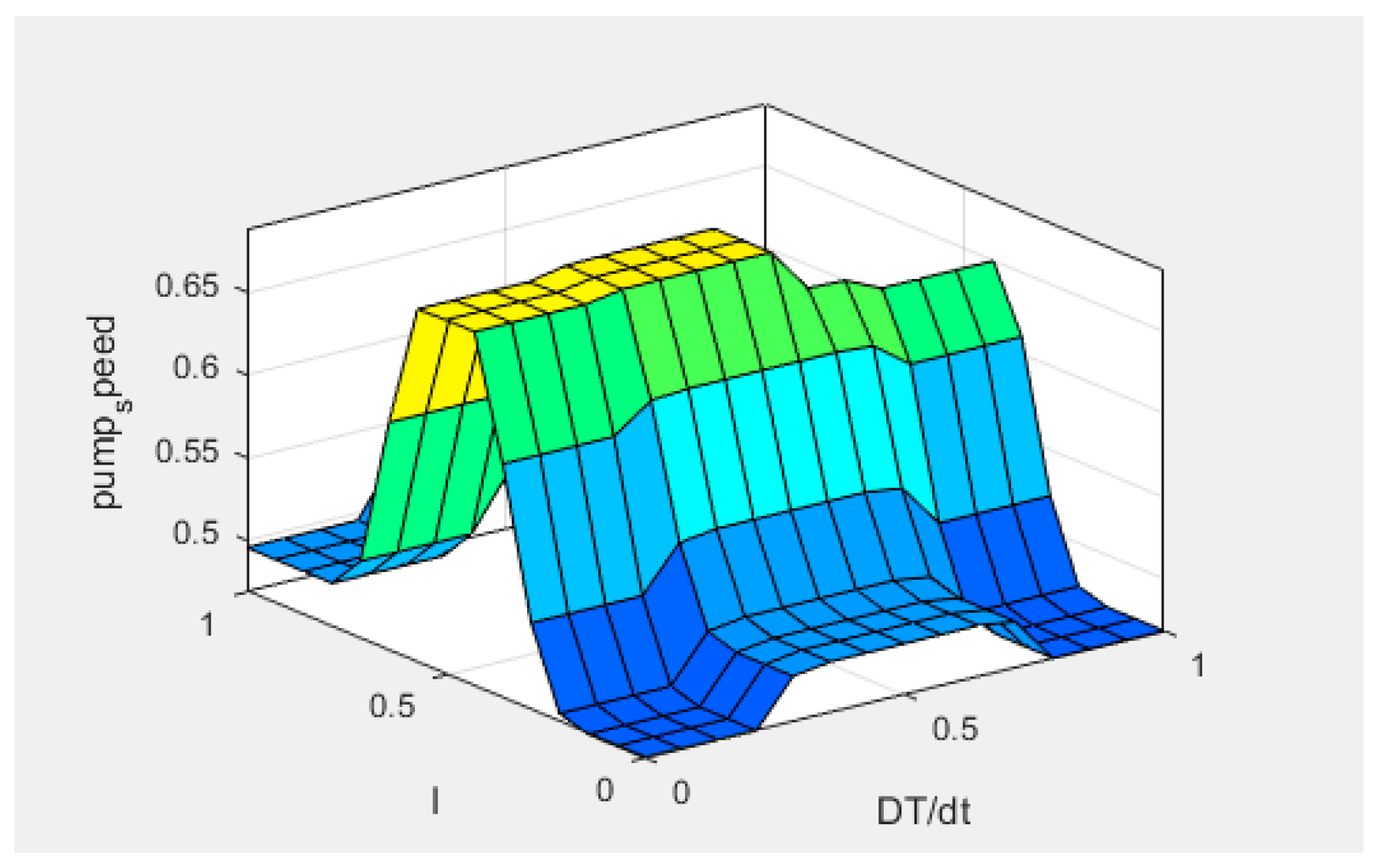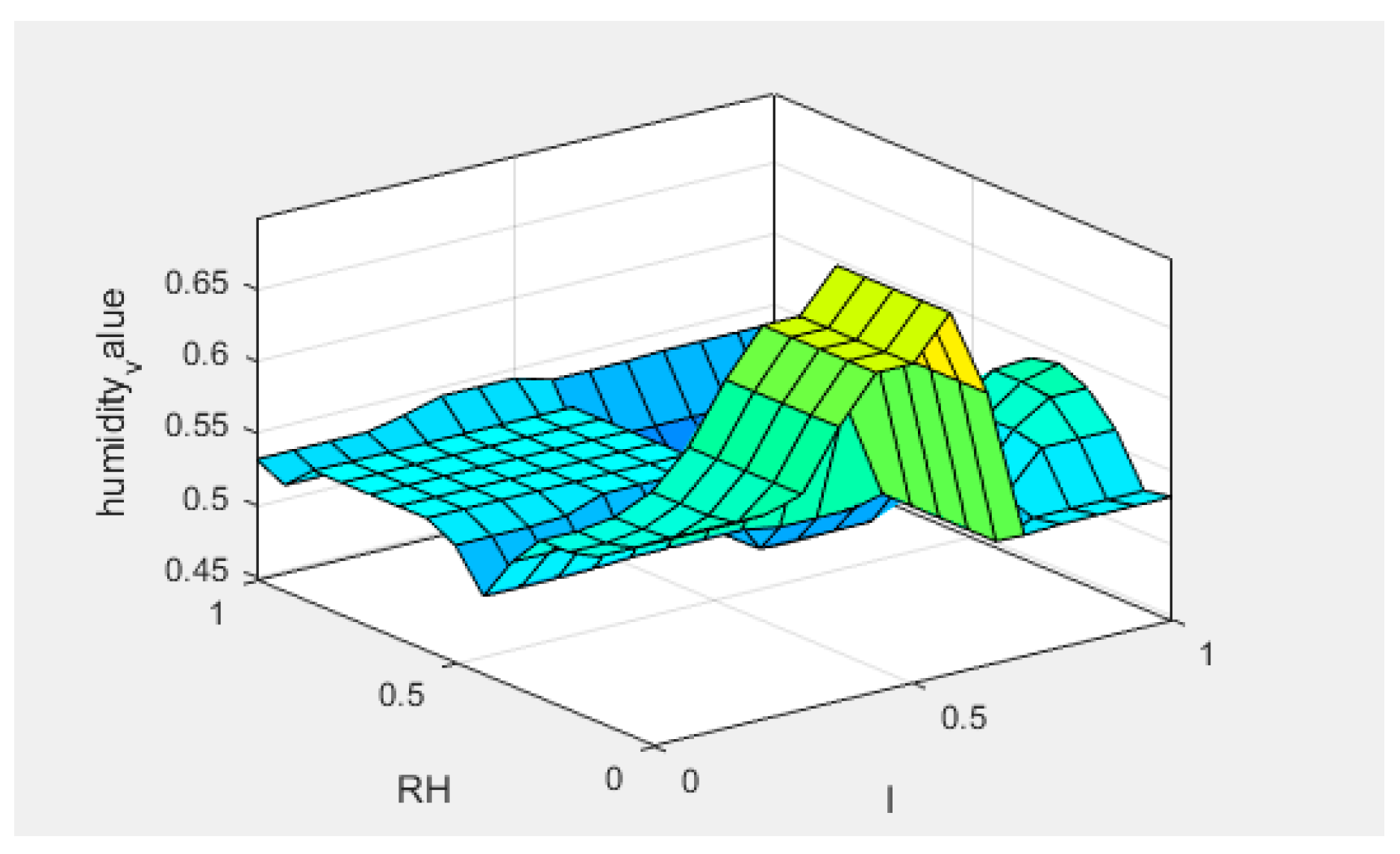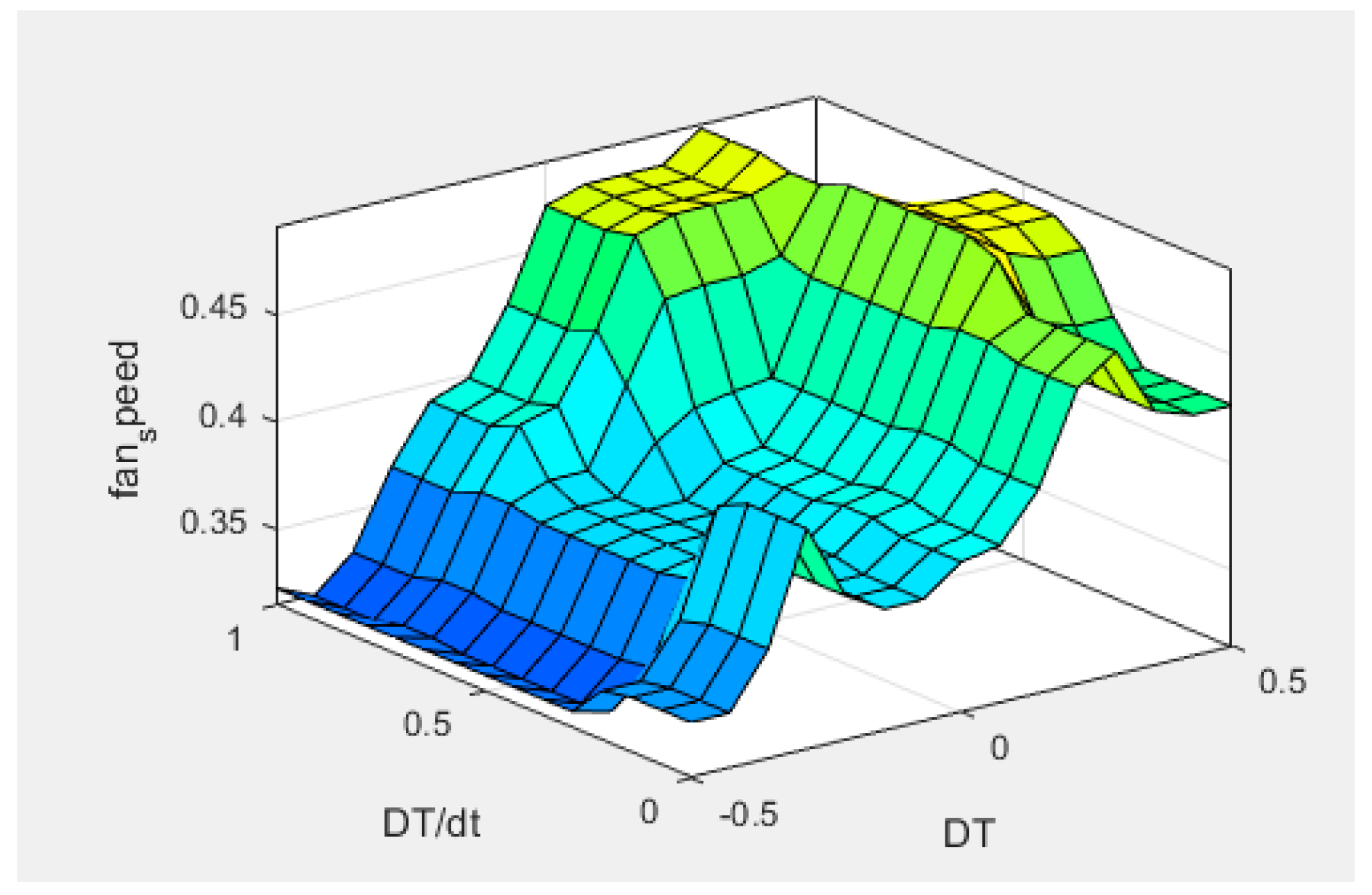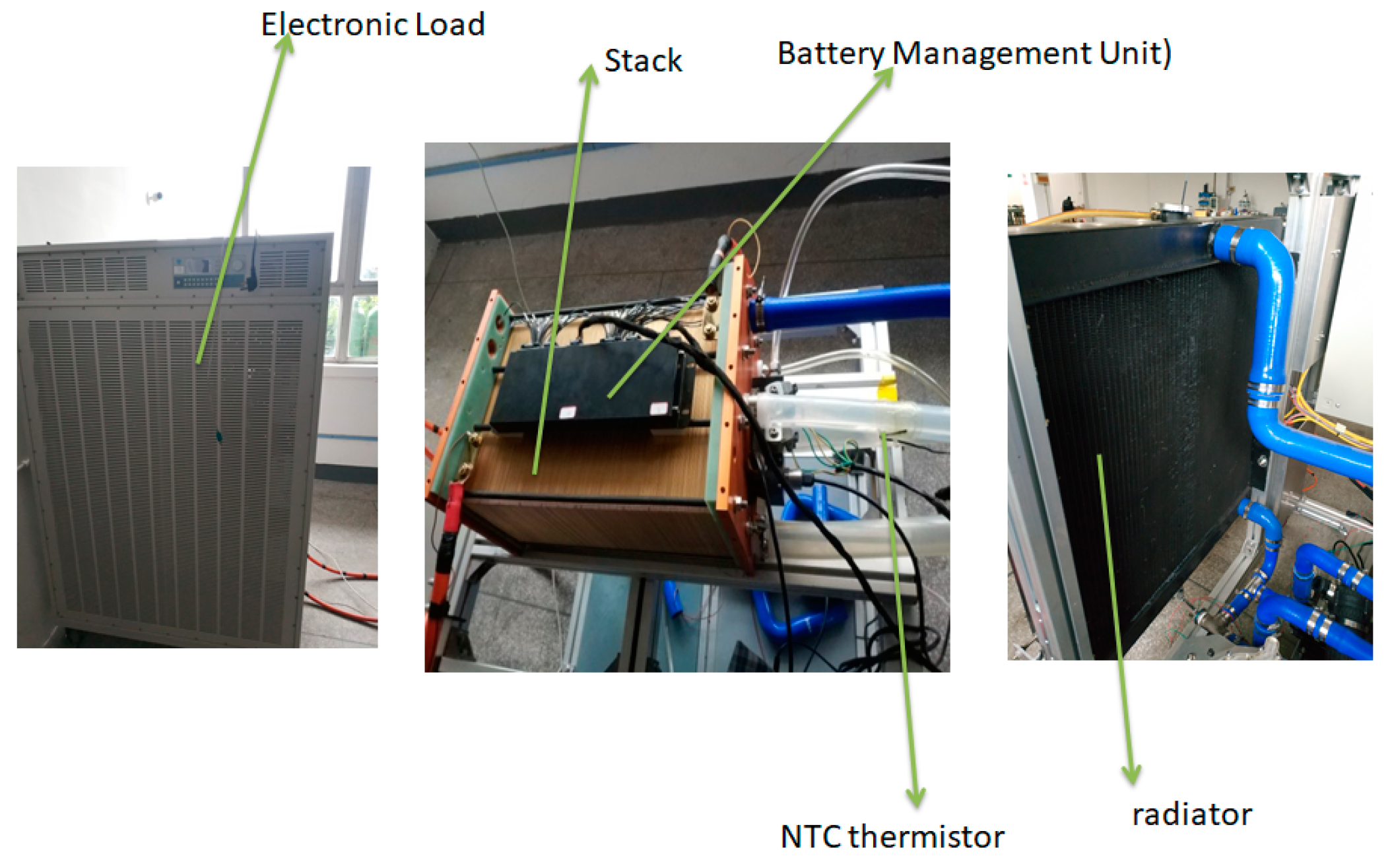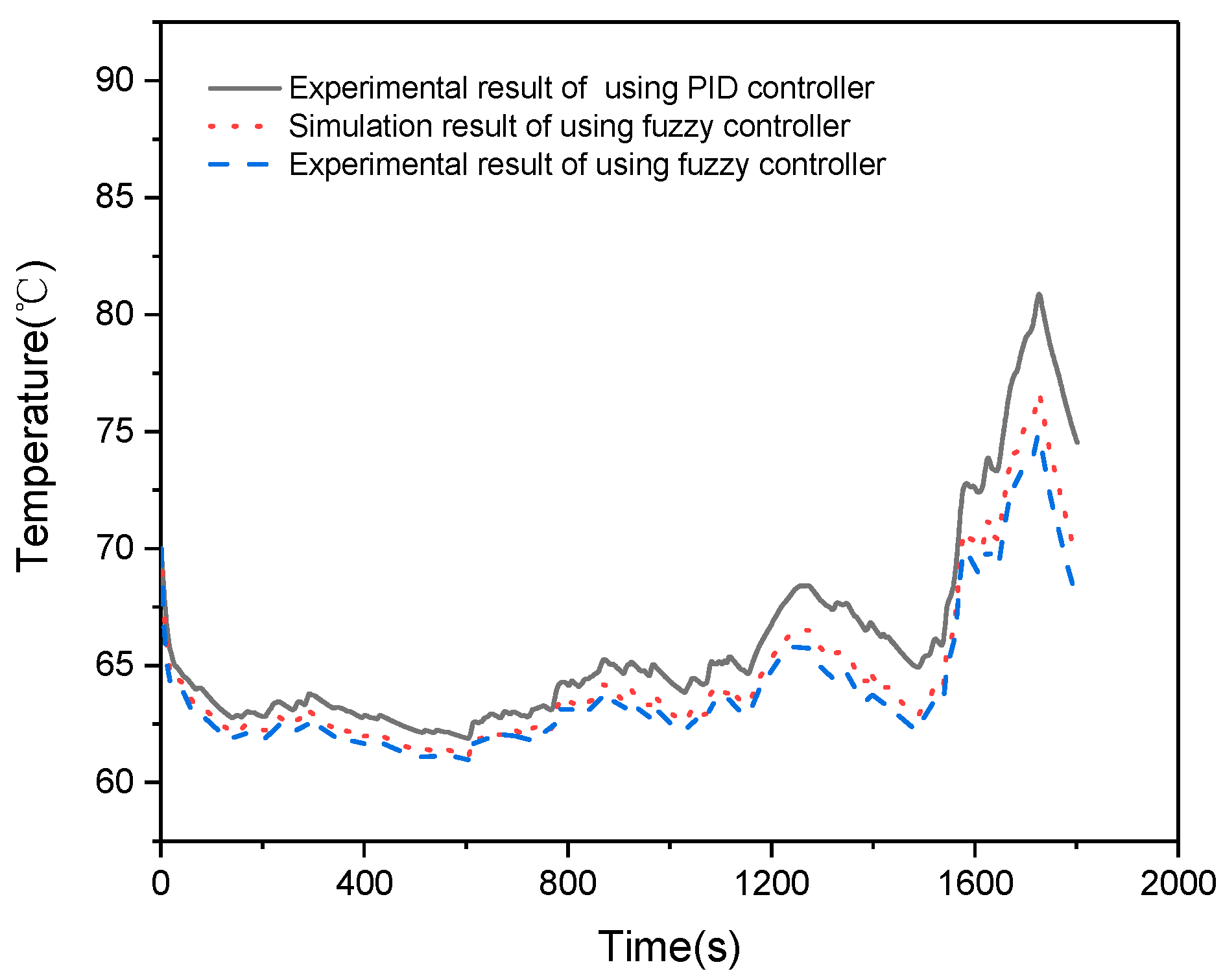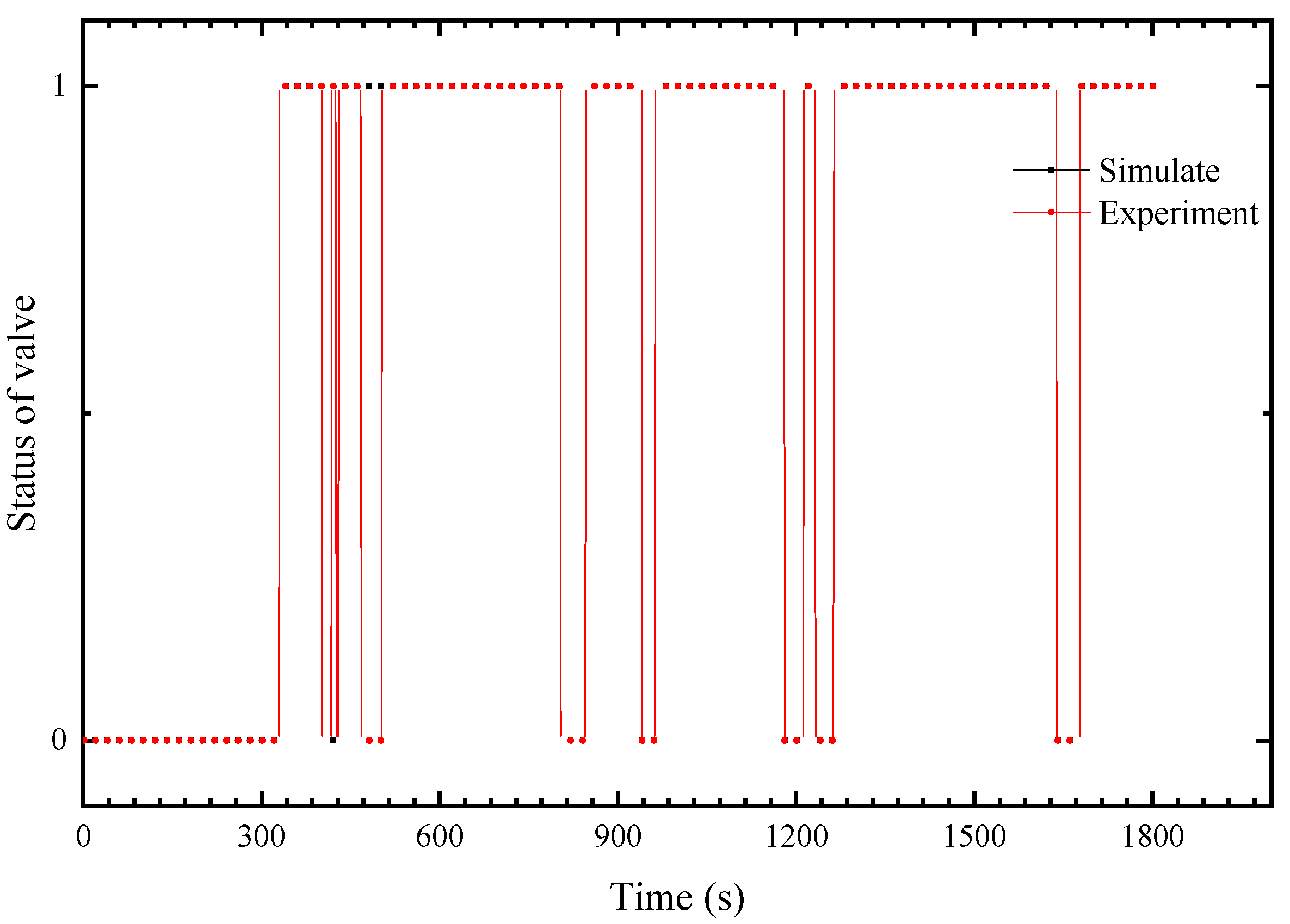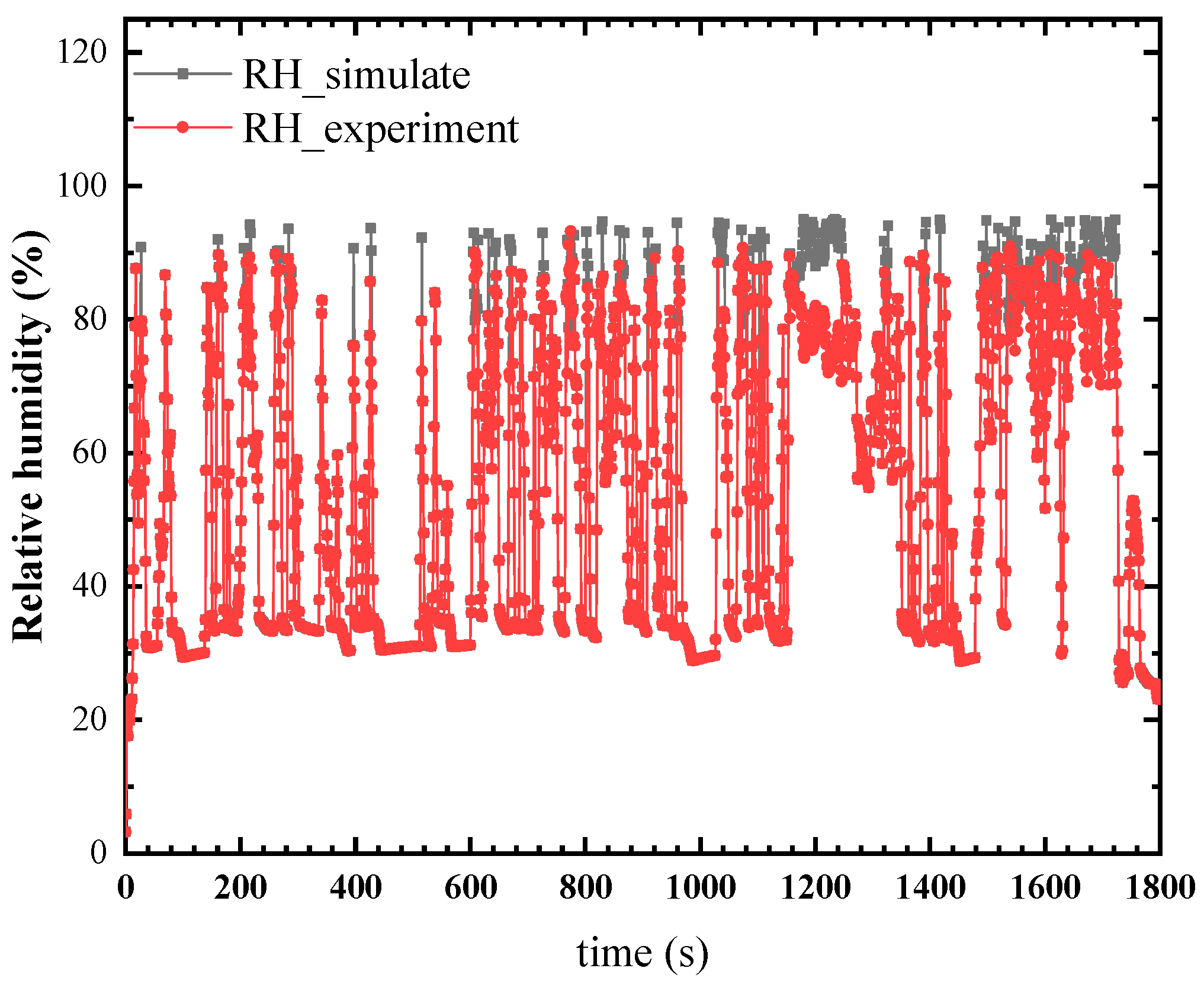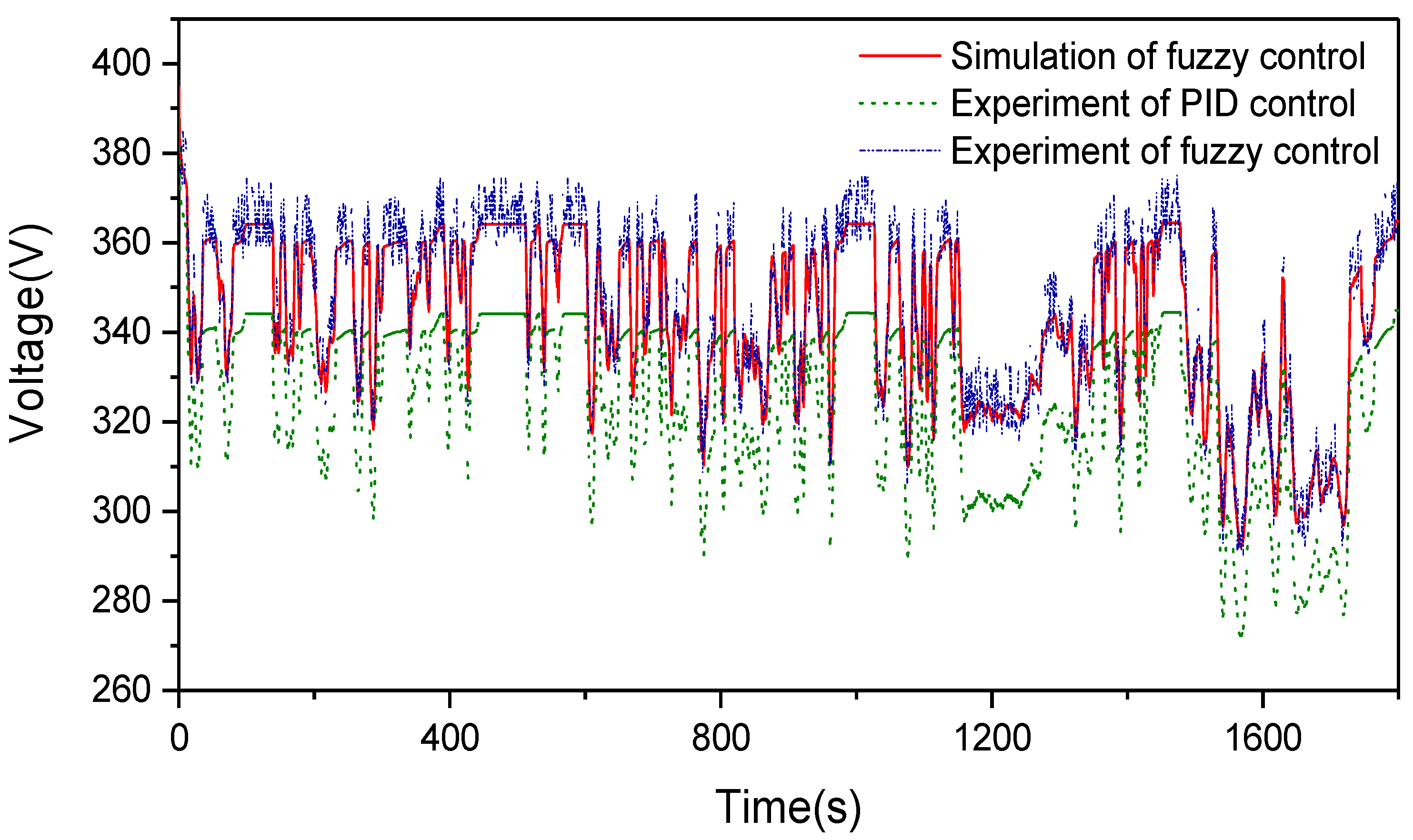1. Introduction
In order to cope with increasing energy and environmental problems, fuel cells have become famous alternative energy sources for the next generation. Fuel cells have the advantages of high efficiency, low noise, and no environmental pollution. Electricity generation does not go through the combustion process, and the efficiency can reach about 45% [
1,
2]. Electrochemical heat, steam condensation heat, and ohmic heating are the sources of heat generation in fuel cells [
3]. Moreover, 80–90% of heat is generated in the catalyst layer on the cathode side. PEMFCs operate at relatively low temperatures (60–80 °C). Inappropriate thermal management leads to different thermal problems. Among them, two basic problems such as membrane drying and cathode flooding can be mentioned.
Temperature is one of the most important factors affecting the performance of fuel cells, and PEMFCs can have an energy efficiency of 40–60% when the operating temperature is stable at 60 to 80 °C. When the operating temperature of the stack is too low, the impedance of the stack increases, so the overall performance and efficiency of the stack decreases; when the operating temperature of the stack is too high, it will lead to the dehydration of the proton exchange membrane. Therefore, in order to maintain a stable working temperature, it is necessary to discharge the waste heat from the stack by a thermal management system.
The conductivity of the proton exchange membrane is closely related to the water content. Improper water management can lead to membrane drying or flooding, causing degradation of performance and durability. If the water content of the membrane is too small, the mass transfer resistance will increase; excessive water will cause the phenomenon of “water flooding”, block the diffusion channels of the reactant gas and seriously affect the performance of the fuel cell.
The thermal management of the fuel cell system should consider not only the cooling of the stack, but also the possibility of heat recovery. In this regard, additional devices must be used, such as air-to-air heat exchangers, humidifiers or condensers. They use part of the enthalpy of the exhaust gas and coolant at the cathode outlet, especially the enthalpy wheel in the heat exchanger. These components are mainly responsible for transferring heat, but they also allow the exchange of moisture. They are very compact and can achieve high energy transmission efficiency. It consists of a cylinder of gas-permeable material (polymer, aluminum or synthetic fiber) with a large surface area, which is necessary for sensible heat transfer. The driving force for the exchange is the thermal gradient between the relative airflows.
The main components of proton exchange membrane fuel cells are the anode, the cathode, the proton exchange membrane, the gas diffusion layer (GDL) and the catalyst layer in
Figure 1. The voltage of a single fuel cell is generally around 1.2 V [
4]. To achieve the desired voltage and power, a suitable single cell needs to be connected in series. The stack used in fuel cell vehicles is generally composed of hundreds of single cells. A complete fuel cell system includes the stack, the hydrogen supply, the oxygen supply system, the humidification system and the thermal management system.
The actual output voltage of the fuel cell is mainly composed of four parts [
5,
6,
7,
8]: Nernst open circuit voltage (
E0), activated polarization voltage (
Vact), concentration polarization voltage (
Vconc) and ohmic polarization voltage (
Vohm). The voltage is calculated as follows:
(1) Activated polarization overvoltage is generated during the process of mobile electrons forming a chemical bond between the cathode and anode, which can be expressed as:
Among them, x1, x2, x3 and x4 are the fuel cells’ empirical constants related to the operating temperature and the air excess coefficient. In this article, x1 is −0.95; x2 is 0.003; x3 is 7.1 × 10−5; and x4 is −1.85 × 10−5. is the stack working current. is the dissolved concentration of oxygen at the gas–liquid interface. is the temperature of the fuel cell.
In summary, the activation polarization overvoltage of the fuel cell is related to the temperature, the air excess coefficient and the current magnitude.
(2) Concentration polarization overvoltage can be expressed as:
where
is related to temperature and excess air coefficient. In this article,
is 0.0129 on the anode side and 0.0064 on the cathode side.
is the maximum current density.
is the current density
In summary, the concentration polarization overvoltage of the fuel cell is related to the current density, temperature and excess air coefficient.
(3) The Ohmic overvoltage in the stack is calculated as:
Among them,
R is the single cell membrane impedance, Ω. In this article,
R is 0.3, known by the law of resistance:
In the formula, —membrane resistivity is related to the water content, current and activation area of the membrane;
—Thickness of the proton exchange membrane;
—Activated area of single cell;
In summary, the ohmic overvoltage of the fuel cell is related to the magnitude of the current, the membrane water content and the membrane thickness.
Jang [
9] found that gas humidification temperature, cell temperature and gas flow rate are the key operating conditions affecting the performance of fuel cells. Lobato [
10] found that the improvement of stack performance depends on the temperature. High temperature can cause the proton exchange membrane to become dry or even dehydrated. Corinna [
11] found that the temperature had a strong influence on the wettability and proton conductivity of the stack, but had little effect on the average voltage of the stack. According to Rodatz [
12], the uneven temperature in the stack will increase the resistance of the gas and cooling water channels and form a localized hot zone. Seok-Ho Seo [
13] found that the control of the amount of liquid water by adequate cooling fuel cell system in the GDL layer is very important for the stable and reliable operation of PEMFCs. Srinivasan Raman [
14] discussed the model-based control strategies by maintaining the humidification to avoid drying and flooding. Stephan Strahl [
15] developed a controller with a simple structure, and a good closed-loop behavior to serve for further temperature and humidity control studies of PEMFC systems.
In previous research, temperature control has become the main method of thermal management. Considering that fuel cells are different from lithium batteries, the dual control of temperature and humidity will be more reasonable. This paper focuses on the water and thermal management system in a 30-kW proton exchange membrane fuel cell. Based on the functional model with a fuzzy controller, we take the humidification into consideration. Finally, a test bench for fuel cell stack testing was built with a corresponding air supply system, hydrogen supply system and cooling system. The simulation curve coincides with the test curve, and the temperature and humidity dual control proposed in this article can improve the output performance of the fuel cells.
2. Numerical Simulation
With the help from the software Amesim (Advanced Modeling Environment for performing Simulation of engineering systems), the functional model of the fuel cell system is built, which mainly includes stack, air supply, hydrogen supply, thermal management, circuit load and driver control. This paper focuses on the temperature and humidity control of the stack system. The following assumptions are made: (1) the reaction is carried out under steady-state conditions; (2) the gas is an ideal gas; and (3) the flow pattern in the plate channel is laminar.
Table 1 illustrates parameters in the simulation and experiment.
2.1. Fuel Cell Stacks
The main heat sources of the proton exchange membrane fuel cell system during the operation are as follows: the electrochemical heat is generated due to the irreversible running of the cell, the Joule heating is generated due to ohmic polarization, the heat introduced by the humidified gas and the external radiant heat. The two most important things are the reaction heat and Joule heat [
16]. Thermal management is essential to the performance of the PEMFC system.
Figure 2 shows the Schematic diagram of balance. A stack module is established in Amesim, which is used to simulate the reaction of PEMFC [
17]. The temperature of the stack is calculated by the electrochemical loss and the heat exchange with the cooling device [
18].
2.2. Fuel Cell Electric Vehicle (FCEV) System
Figure 3 shows the simulation diagram of the whole system from top to bottom and from left to right. There are many key parts in the system which include the driver module, vehicle module, transmission module, fuzzy control module, stack module, air and hydrogen module, as well as the cooling system. The following section will introduce the main output variable of these modules, as well as its roles in the whole system.
In order to satisfy the New European Driving Cycle (NEDC), which includes both urban and suburban and highway driving. The driver module is used to predict the driver acceleration and the braking command. The main output variables are gear lever position, brake control and acceleration control.
The total force (F
tot) is computed as:
where:
masseq: equivalent mass (including inertias) [kg];
accel: necessary acceleration [m/s2];
Fstab: force for constant vehicle speed [N].
The driving power (Power) is computed as:
where:
The vehicle module is used to evaluate the velocity and acceleration among all the operating car in this scenario. The velocity mainly depends on the electric machine torque, the resistive forces applied on the vehicle and the vehicle mass. The main output variables are vehicle speed, vehicle position and altitude. The aerodynamic drag (F
aero) [N] is calculated as follows:
where:
ρair is the air density [kg/m3] at port 7;
Cx is the air penetration coefficient [null];
S is the vehicle active area [m2];
v is the vehicle linear velocity [m/s];
vwind is the input wind velocity [m/s] at port 7.
Without considering the fuel cell at this stage, the electrical network includes one battery and two DC/DC converters. The first DC/DC converter is integrated between the stack and the battery. The second DC/DC converter is integrated between the battery and the blower motor. It is used to control the torque of the motor to produce the correct blower speed and thus obtain the correct air mass flow to the cathode. The main output variables are current and potential.
The stack model evaluates the stack voltage, the temperature and the operating conditions at cathode and anode. It also predicts reactants and reaction products. In order to predict the dynamic thermal behavior, water transportation across the membrane, individual heat capacity of the stack, the heat generated by the fuel cell as well as the heat exchanged with the cooling system should all be considered. The main output variables include current, potential, temperature, enthalpy flow rate and mass flow rate. Hydrogen is provided by the high-pressure tank and its pressure regulator to the anode. A hydrogen mixture chamber is used to represent the anode gas volume and a pump is responsible for recirculate hydrogen from anode outlet to anode inlet. However, unreacted hydrogen will be recycled and be used again in the system. On the cathode, the air compressor is responsible for the air circulation, and the air will be humidified by the humidifier before it goes through the fuel cell stack. At the cathode outlet, a pressure relieve valve is introduced, and a turbine is also integrated in order to recover some power from the exhaust air.
The reaction rate (dn) [mol/s] is computed as follows:
Istack: stack current [A];
n: number of electrons involved in the reaction, here n = 2;
F: Faraday’s constant (96485.3415 [C/mol]);
Ncell: number of cells in the stack, here Ncell = 600.
The current density j
stack [A/cm
2] is computed as follows:
A pump is used to generate the coolant (water) flow in the cooling loop in the cooling system. The coolant exchanges heat with the stack. When the coolant temperature rises, a thermostat opens, and a fan starts in order to exchange more heat with the radiator. The main output variables are heat flow rate (from cooling system to stack), the temperature of water and enthalpy flow rate and mass flow rate.
The mass flow rate is calculated so that the output pressure (high pressure) reaches the following value:
where pin is the input pressure (low pressure) and Δp is the pressure difference. The power provided by the pump (P
me) to the fluid is as follows:
where Q is the volumetric flow rate, Δp the pressure difference and feff the global efficiency.
The projected area of the fan on the radiator acts as the ventilated surface of the radiator. Hence, the velocity of air through the ventilated surface (Vs) is given by:
where Vair is the velocity of air at the radiator inlet [m/s], and Vfan is the additional velocity when the fan is operating [m/s]. The area of the ventilated surface AS is given by:
where Dext is the external diameter of the fan [m], and Dint is the internal diameter of the fan [m]. The experimental heat exchanged on the ventilated surface HVexp is therefore:
where Rh is the radiator height [m], and Rl is the radiator length [m].
In this demo, a fuzzy controller is built to regulate the temperature and water content of the membrane. The entire simulation model is shown in
Figure 3. The fuzzy controller includes five inputs, namely, the current, the relative humidity of the hydrogen voltage change rate, the temperature error and its derivative. The three output objectives are the fan speed controller, which is used for regulating temperature, the solenoid valve on/off control of the bubble humidifier, which is used for humidity variation, and the speed of the pump.
Figure 4,
Figure 5,
Figure 6,
Figure 7 and
Figure 8 show each input membership functions.
Figure 9,
Figure 10 and
Figure 11 are the membership functions of the output values. These functions are called defuzzification. The logic rules are in the form of IF-THEN statements [
19]. The fuzzy logical control rules are demonstrated in the
Figure 12,
Figure 13 and
Figure 14.
